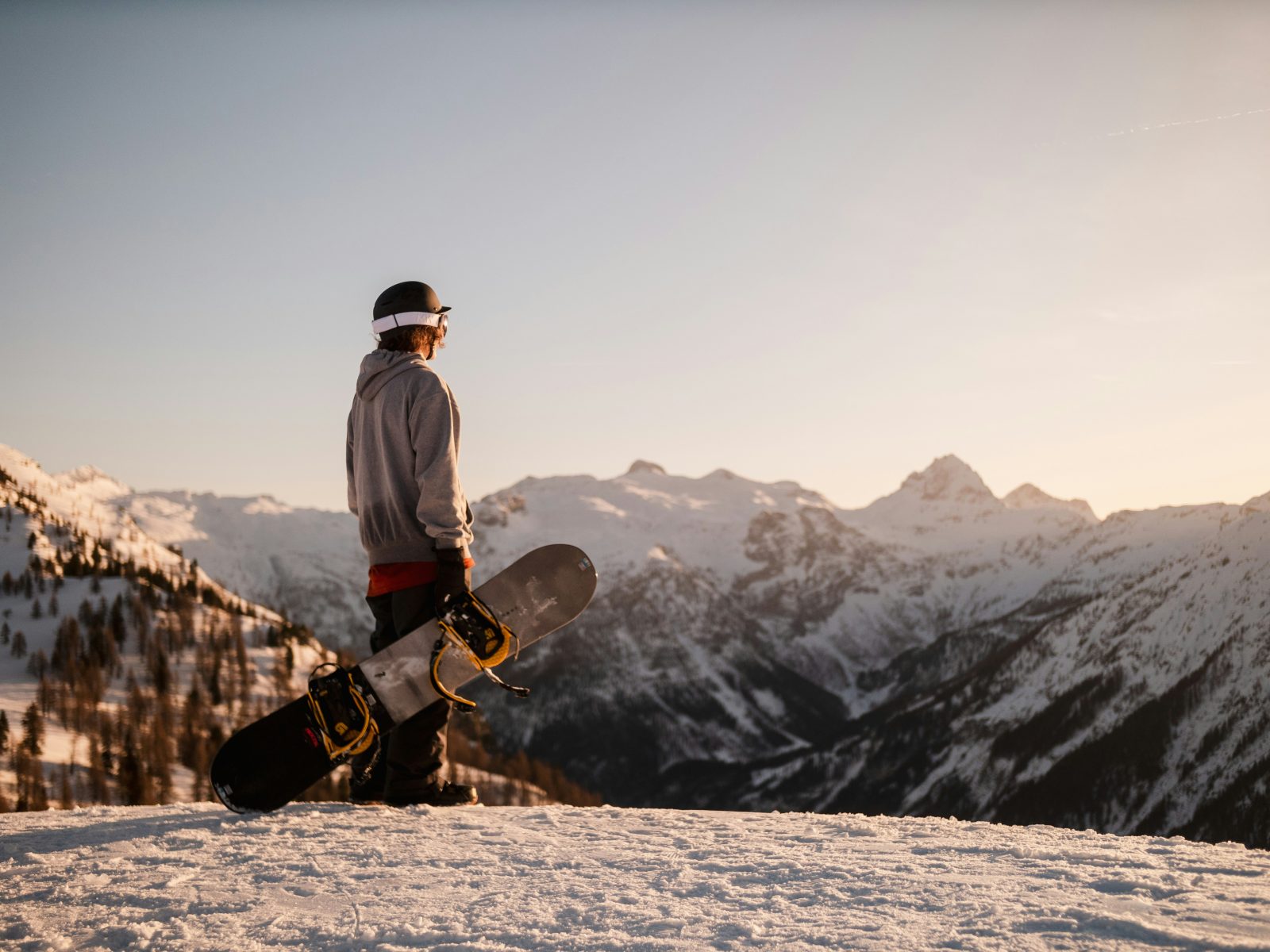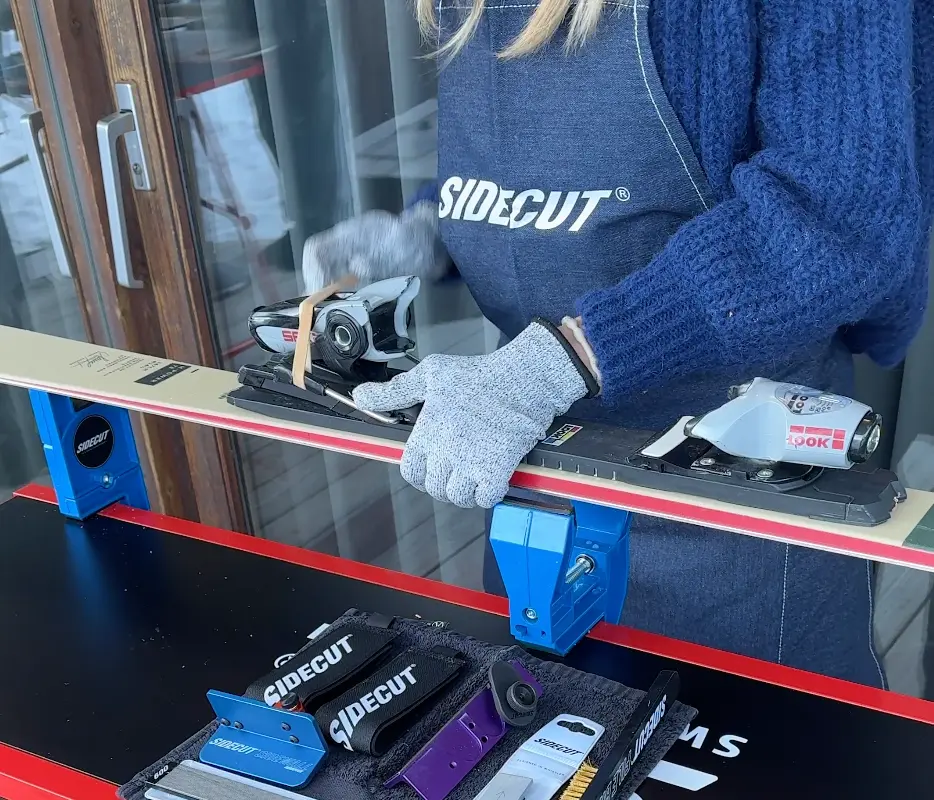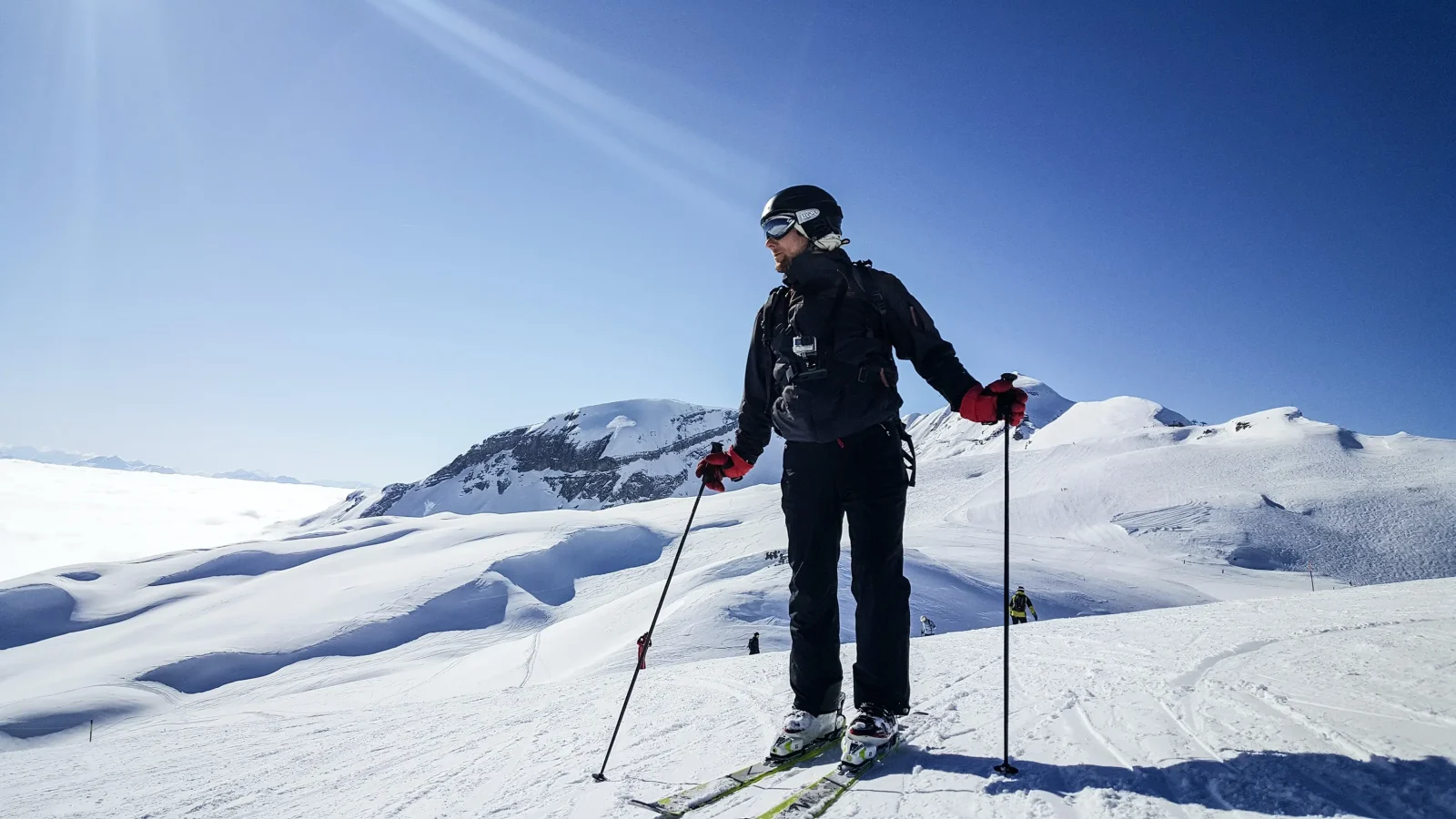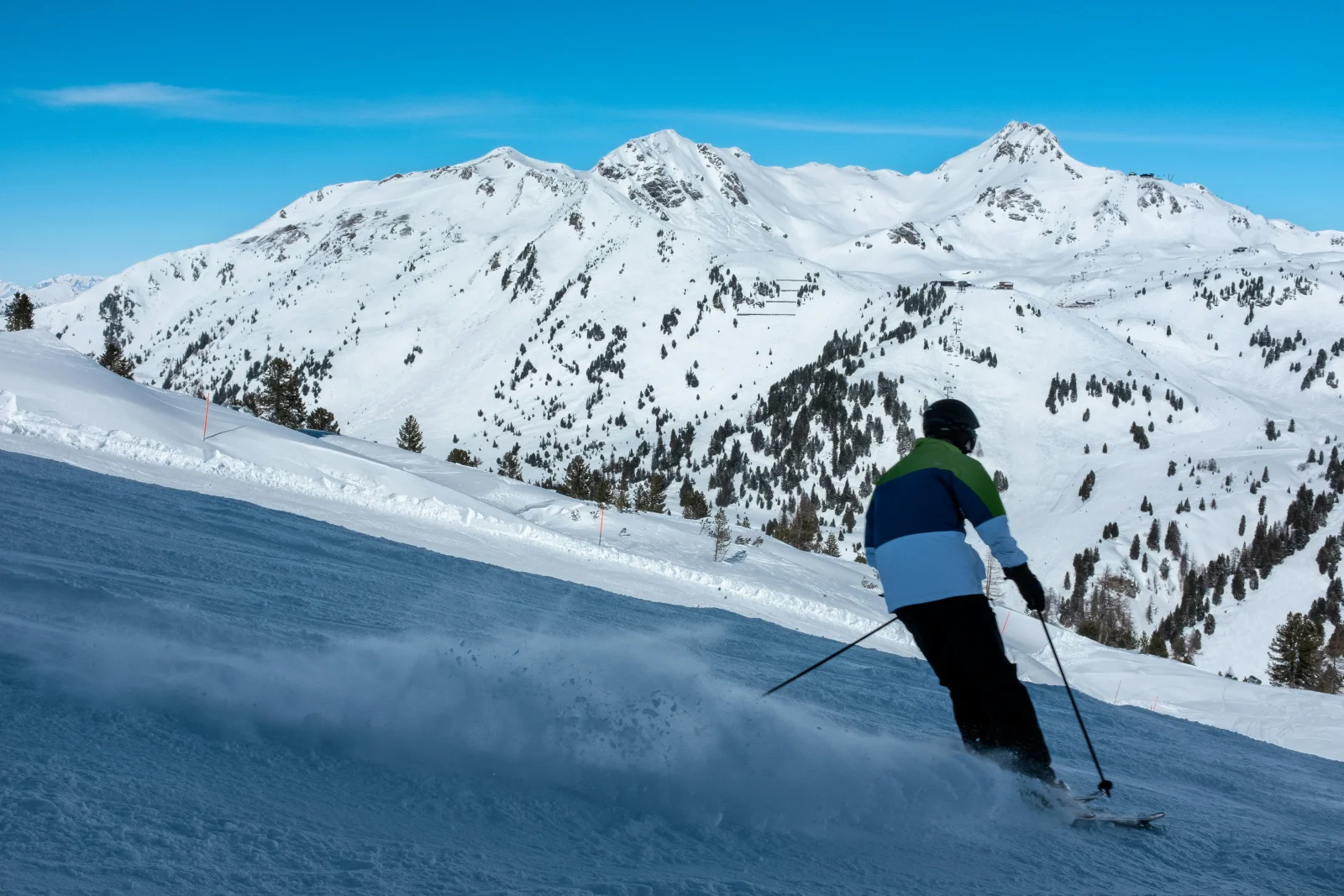Snowboarding is an exhilarating sport and there is much to look forward to ahead of your first snowboarding trip. However, there are a few things to keep in mind to best prepare for your first time on a snowboard and ensure that your experience is as smooth and enjoyable as possible.
If you are a beginner snowboarder heading out to the mountains for the first time, read on for 10 top tips from our expert instructors that will help you get off to a great start on your snowboarding journey.
1. Make Sure That You Have the Right Equipment
As with all mountain sports, safety comes first – so make sure that you are kitted out with the correct safety equipment. A helmet is essential and wrist supports are advised for beginner snowboarders. You also need to make sure that you have the right snowboard and boots for you. Your toes should be able to feel the end of your boot but not be pressed tightly against it. If your boot is too big, your heels will lift a lot and it’ll be hard to control your board. As a beginner, you should start with a smaller all-mountain snowboard. Be sure that you have all the necessary ski clothing and gear needed ahead of your trip and make sure to get your boots and snowboard fitted by a professional.
2. Book an Instructor
A professional snowboard instructor will help you to learn the fundamentals of snowboarding in a safe and efficient way. A snowboard instructor can help you to perfect your technique through demonstration and personalised feedback and will prevent you from developing any bad habits. With the guidance of an expert instructor, you will quickly build confidence and progress in your snowboarding. Your instructor will take you to the best areas for your ability, teach you how to correctly use equipment and how to take the different types of ski lifts in the resort. If you are a beginner snowboarder, booking an instructor is always a good idea!
3. Know Your Stance and Learn the Correct Snowboarding Posture
Before heading out on the slopes it’s important to identify your snowboarding stance; regular (left foot forward) or goofy (right foot forward). Typically, your more dominant foot should be at the back as this foot does more work when you are boarding. Once you know your stance, you can work on perfecting your posture. When snowboarding, your weight should be centred, back straight, shoulders square and knees, hips and ankles slightly flexed. Keep your muscles relaxed as this will help you to maintain balance and react more effectively to changes in terrain.
4. Start on Easy Terrain
When learning to snowboard, it’s best to start in a beginner’s area or on gentle slopes so that you can safely build confidence and master the basics before advancing to more challenging terrain. Be careful when you are progressing from the nursery slope, as easy terrain for skiers doesn’t always translate into easy terrain for snowboarders. Long, flat sections can be difficult as a beginner snowboarder so try to avoid these if you can before you have built your confidence at higher speeds. When progressing onto steeper slopes, remember to traverse across the width of the slope to help you control your speed.
5. Learn How to Strap Into Your Snowboard
When strapping your boots into your snowboard, first strap in your front foot. Make sure to remove any snow in the footbed then put your foot in the binding, pushing it right back against the backboard. Begin by fastening the ankle strap then secure the toe strap, making sure they are nice and tight as this will give you more control. Many beginners sit down to strap in, but this can waste a lot of time and energy and give you a wet bum! The best way to strap in is to remain standing. Use the edge of your board to create a flat shelf so that your board doesn’t slide away, then bend down to strap in and you are ready to go!
6. Learn How to Skate With Your Snowboard
With both feet strapped to one board, it can be difficult to move around easily on flat terrain. You don’t want to carry your board everywhere, as this wastes time and will make your arms ache. Instead, you can strap your front foot in and then push yourself forward with the other foot, or ‘skate’. This may feel a bit unnatural at first but it will make your life a lot easier! Skating is a key skill to learn as it will help you to get around on flat areas and use chairlifts. Whether you skate on your heel edge with your foot behind you, or on your toe edge with your foot in front will depend on your personal preference and the terrain.
7. Learn How to Control Your Speed/Stop
One of the most important skills to learn as a beginner snowboarder is how to control your speed. Controlling your speed on a snowboard is all about using your edges – think of them as breaks. Depending on whether you are facing uphill (toe-side edge) or downhill (heel-side edge), you can use your edges to control your speed, applying more pressure through your toes or heels to slow down and stop. Great drills to practise using your edges and controlling your speed down the hill are side slipping and the falling leaf drill. Once you’ve perfected these drills you can progress onto turns!
8. Learn How to Fall Safely
When learning to snowboard, there are going to be many falls, but don’t let this put you off! To avoid injury, it’s important to learn to fall in as safe a way as possible to protect your joints that may take the brunt of the impact. To fall in a safe way, tuck your head in to protect your neck, bend your knees to stay low and minimise impact and try to fall on your forearms to protect your wrists. If you do fall, try to get up and moving again as quickly as possible or move to the side of the slope if you need to rest before getting up again to avoid being in the way of other skiers and snowboarders.
9. Warm Up and Cool Down Properly
Remember to always warm up and cool down properly. When learning a new sport you may be using muscles that you don’t normally use, so it’s especially important to stretch and get them warm before heading out on the slopes. This will help with injury prevention and enhance your overall performance. Make sure to warm up your wrists, knees, ankles and hips before snowboarding. It’s equally as important to stretch your muscles after snowboarding as it is beforehand. This will aid with recovery, so you feel fresh and ready to go the next day. But don’t worry, it’s normal to feel a bit achy after a day on the slopes!
10. Be Patient With Yourself and Have Fun!
Snowboarding is a difficult sport to learn. Every day may not be a good day but the more you get out there, the more you will improve. Try to enjoy the learning process – it’s not easy and it will take time, but you’ll get there! Celebrate the small wins and don’t take it too seriously! Try not to compare yourself and your rate of progression to others – everyone learns at different paces. With patience and a positive attitude, you’ll be flying down the slopes in no time!
If you follow these 10 top tips for beginner snowboarders you’ll be ready and prepared for your first snowboarding experience and will be sure to have a fantastic time on the slopes!
Book snowboarding lessons on Maison Sport today!
For more top tips watch our YouTube video with two-time Olympic Snowboarder and BBC Ski Sunday presenter, Aimee Fuller, on how to look like a pro snowboarder (as a beginner).
You might also like: The Best Ski Resorts for Beginner Snowboarders in France



